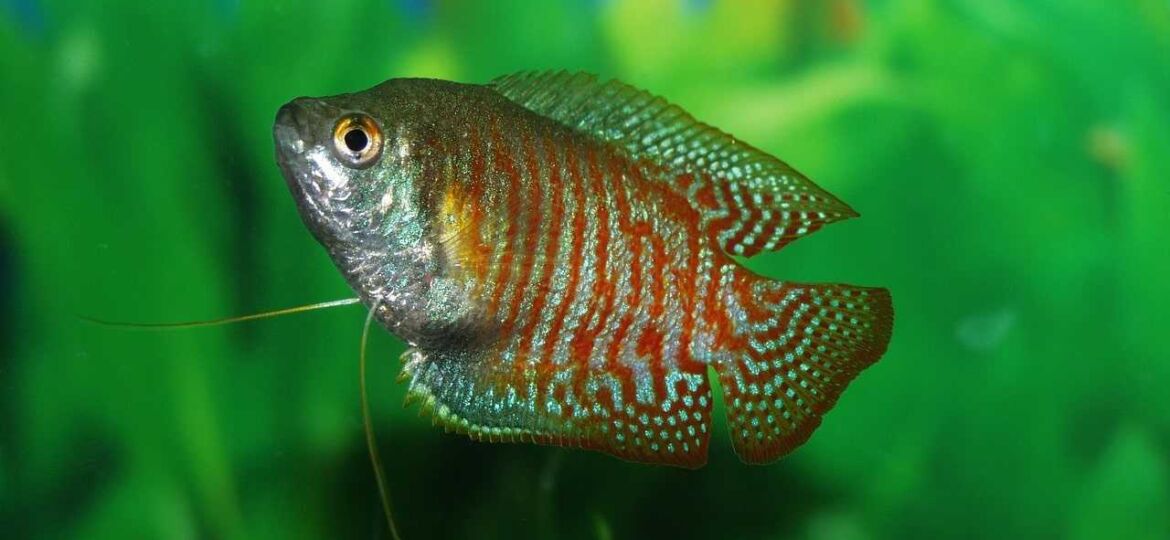
The gourami or Colisa lalia is a member of the family Belontiidae. It is native to India. The Indian Gourani is often referred to as the dwarf gourami because because there is a larger gourami native to Thailand that grows twice the size of the Indian variety.
The Gourami is part of the Anabantoidei suborder. This suborder evolved a lung-like organ known as a labyrinth to help them survive in low oxygenated environments. The labyrinth allows them to breathe atmospheric oxygen. Gouramis will frequently rise to the surface to take in atmospheric oxygen. Members of the Anabantoidei Suborder need a combination of both airborne and dissolved oxygen to survive.
In nature male dwarf gouramis have diagonal stripes alternating in blue and red. Females are silver. However selective breeding has yielded red, neon, and rainbow variations. Both sexes have tread-like touch sensitive cells extending from their pelvic fins. Adults reach about two inches in length.
Gouramis are docile in nature. They work well in community tanks as long as they are housed with fish of similar temperament. Despite their shy demeanor, gouramis are aggressive toward other gouramis. Each gourami establishes a territory and hiding place of its own. Gouramis take readily to heavily planted aquariums. They seem to function better in pairs. Keep this in mind when deciding whether they are what you are looking for in the way of a new addition to your tank.
Gouramis thrive in slightly acidic water with a temperature range between 77-82 °F. They are omnivore and can survive perfectly well on a diet of tropical fish flakes.
It is easy to distinguish between males and females. The males have a much brighter color palette. Females are harder to find for sale because of this. If you can not find one at your local fish store they can be ordered online.
Breeding Dwarf Gourami
Gouramis are most likely to spawn in still water. A breeding tank with the filter capacity turned way down will make a suitable environment. Make certain there are floating plants in the breeding tank. The male Gourami will use his labyrinth to make a bubble nest prior to spawning.
Unlike most bubble nest builders, gourami will incorporate small pieces of plants, twigs and other debris into the design of their nest. This addition helps to hold the nest together.
Once the nest is constructed, courting officially begins. Courting is usually initiated in the afternoon or early evening. The males signals his intention to spawn by swimming in circles around the female with his fins flared. If the female accepts his invitation, she will start swimming in circles with the male underneath the bubble nest. When she is ready to spawn she will touch the male on the back or the tail with her mouth.
Spawning generally takes several hours. After spawning is complete remove the female from the tank. The male will stand guard over his bubble nest. The fry will hatch within the next two days. Leave the male with the fry for two or three days. Make sure he is done parenting his brood before removing him to the community tank.
Fry can be fed liquid fry food or small amounts of powdered eggs. After about four days their diet can be changed to newly hatched brine shrimp or finely crushed fish flakes.
Gouramis have been known to mate with other gouramis of another species. Unfortunately there are usually sterile.
AUTOPOST by BEDEWY VISIT GAHZLY


